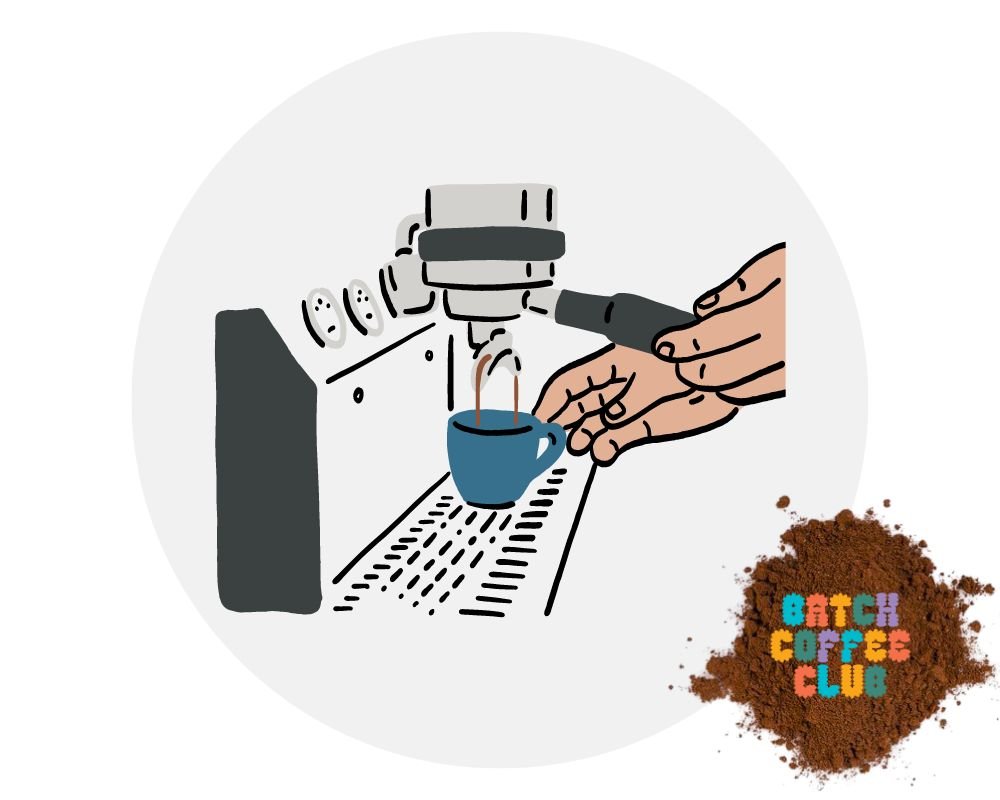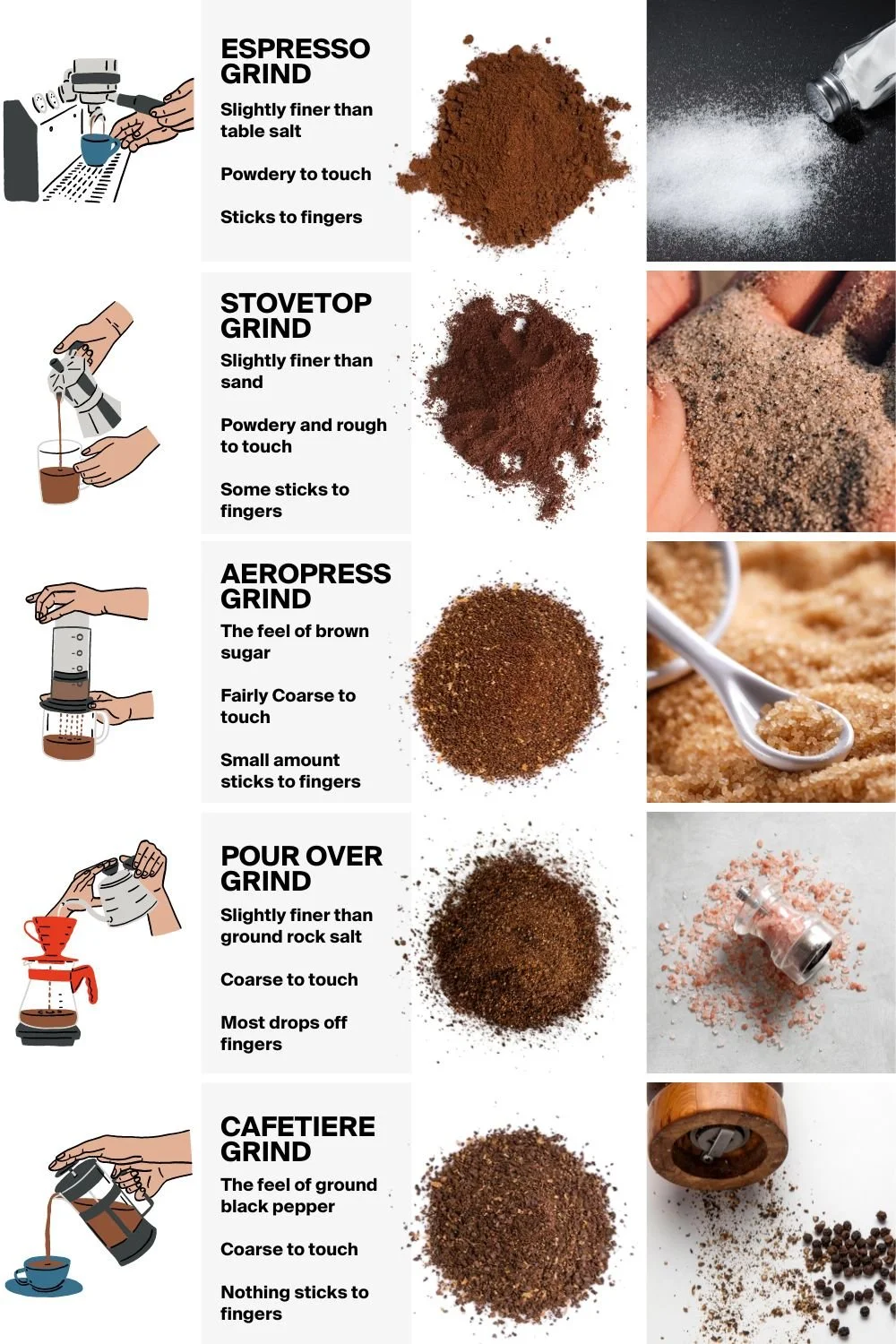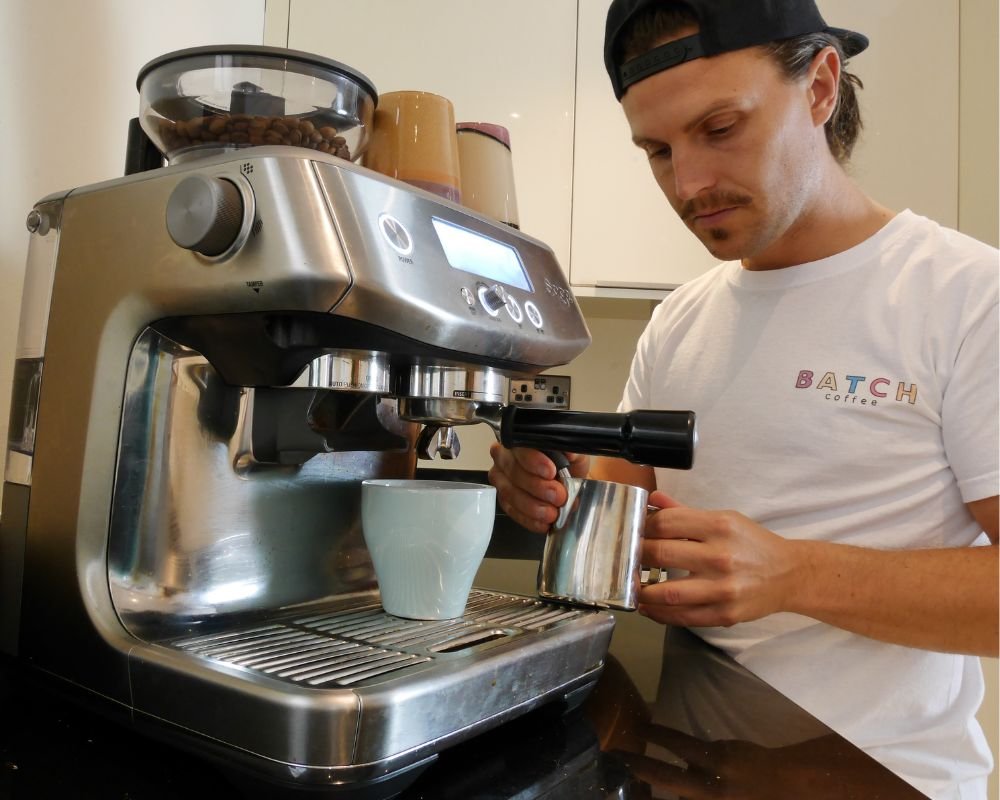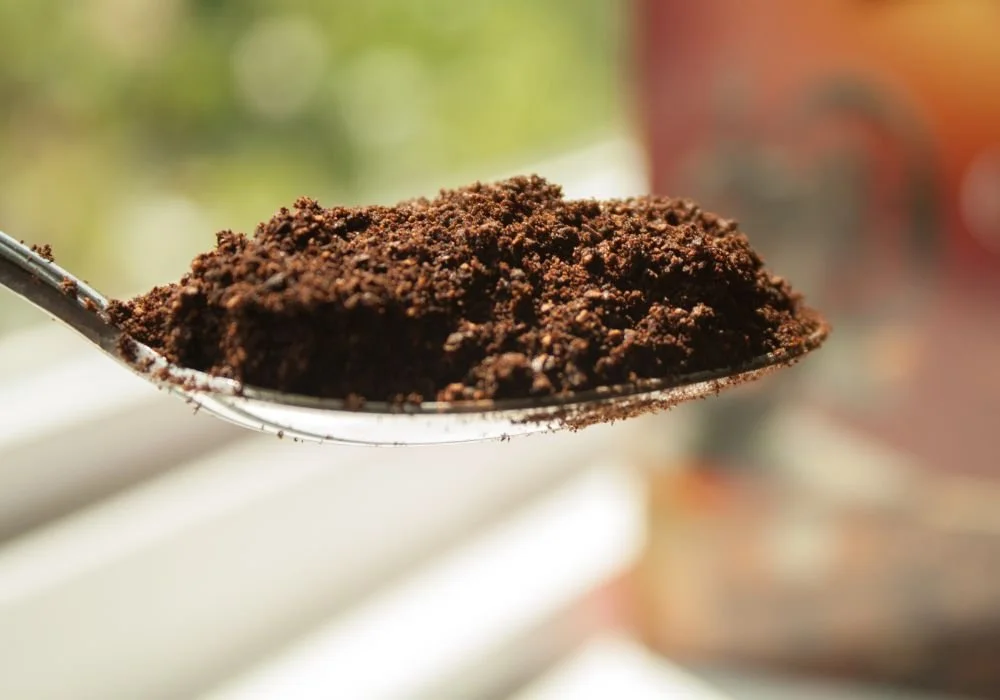Espresso Grind Size | To Extract Delicious Shots of Espresso
Espresso grind size is a cruel, cruel mistress.
The second you think you've pulled the perfect shot, the next one ends up over-extracting.
When it comes to brewing the perfect espresso, grind size plays a pivotal role that cannot be overstated.
The science behind it is simple: finer grinds mean more surface area for the water to extract the coffee's flavour, but get it too fine and you might end up with a bitter, over-extracted shot.
On the flip side, too coarse a grind may result in a weak, under-extracted espresso that lacks the depth and richness coffee aficionados adore.
The Best Espresso Grind Size
Fine Ground Coffee
With an espresso grind, you should aim for a size that falls neatly between powdered sugar and fine beach sand.
See our grind size chart below.
You might wonder why such precision is necessary. Espresso is a brewing method under pressure, and achieving an even and resistant coffee bed is key to extracting those sought-after rich and syrupy shots.
If the beans are ground consistently to the optimal size, water can penetrate and dissolve the coffee compounds uniformly, ensuring that each sip is packed with the nuanced flavours and aromas unique to espresso.
Professional baristas might spend hours dialling in a grinder to the perfect setting, while home coffee-makers have a wealth of resources at their fingertips to guide them to that sweet spot.
For instance, an informative guide to grind settings can make the process less daunting, ensuring that your homebrew stands up to the scrutiny of even the most discerning palate.
Whether you splurge on a top-of-the-line grinder or use a more modest appliance, understanding the relationship between grind size and espresso quality is the first step in crafting the ideal cup.
Understanding Espresso and Its Unique Requirements
Espresso stands apart due to its concentrated flavour and nuanced extraction process. Precision in grind size, coffee quality, and preparation techniques are crucial to a perfect cup.
The Importance of Grind Size in Espresso
In espresso preparation, grind size is pivotal. A fine grind allows for optimal extraction under high pressure, while preventing under-extraction that results from too coarse a grind which can cause a weak espresso with little body. Conversely, a grind too fine risks over-extraction, leading to bitterness.
Extraction and Its Impact on Flavour
The process of extraction is where water passes through the ground coffee, absorbing its oils and essences. Proper extraction yields an espresso replete with rich flavour and alluring aroma. Essential to this is the control of brewing time, which should average 25-30 seconds for a balanced result.
Espresso Machines and Their Influence
An espresso machine's pressure and temperature settings are crucial. Machines that facilitate adjustments to these variables empower baristas to extract espresso that honours the coffee bean's potential. This ensures the espresso's flavour and aroma are optimally released.
Grind Consistency and Coffee Bean Quality
High-quality, fresh coffee subscription beans, ground uniformly, are the backbone of excellent espresso. Uniformity allows for even water distribution during brewing, circumventing channelling and ensuring the full spectrum of flavours is captured in the cup.
Grinder Types and Their Effects on Grind
Grinders come in two primary types: burr and blade. Burr grinders, including both conical burr and flat burr varieties, are favoured for their ability to produce a consistent grind. Blade grinders, while more accessible, lack the precision needed for a regulated grind.
Preparation Techniques for Optimal Extraction
Techniques such as pre-infusion gently prepare the ground coffee within the portafilter, leading to a more even extraction. Mastery in dialling in the grinder settings and a meticulous approach to brew time are key for baristas looking to achieve the very best espresso shot.
Fine-Tuning Grind Size for Espresso
When it comes to espresso, the grind size is critical. You have to fine-tune it to achieve the right balance between flavour and extraction.
Understanding the Espresso Grind Spectrum
Espresso demands a fine grind to extract the full flavour potential. Imagine the grind spectrum as a continuum with extra fine almost like powdered sugar, fine grind similar to table salt, medium like sand, and coarse grind akin to sea salt. Getting the grind right means espresso that's rich and full-flavoured rather than bland or overpowered by bitterness.
Adjusting Grind Size for Espresso Perfection
You adjust the grind to control the extraction rate. For espresso, a fine grind is typically used, but not so fine that it causes channelling of water, where water finds the path of least resistance, leading to uneven extraction. Espresso machines often allow for minute adjustments to get the grind just right, targeting a texture that clumps gently when pinched.
Tips for adjusting grind:
Start with the recommended setting for espresso.
Tweak finer for slow extraction rate and intenser flavour profiles.
Go coarser if shots pull too quickly, indicating possible under-extraction.
Espresso Extraction Issues
Sometimes, you might encounter issues with espresso shots. Over-extracted coffee can taste bitter due to too fine a grind causing the water to linger too long.
Conversely, a coarse grind might leave the espresso under-extracted, resulting in a sour or bland taste. It's about finding a balance, observing the pour, and adjusting accordingly to avoid these pitfalls.
Experience the best coffee in the World
Grind Size Comparisons Across Brewing Methods
Selecting the appropriate grind size is pivotal in honing the flavour and strength of your brew. It affects extraction time, which directly influences taste.
Espresso vs Aeropress Grind Size
For espresso, an extremely fine grind is essential to create the characteristic robust and concentrated shot. Espresso machines exert high pressure, thus requiring a finer grind to achieve optimal extraction within about 25-30 seconds. In comparison Aeropress grind size utilises a medium grind; water filters through more slowly, typically taking a few minutes to brew.
Espresso Compared to Cafetiere
A French Press demands a coarse grind to prevent fine particles from passing through the mesh screen, with a longer brewing time to properly extract the flavours.
Towards the finer end of the spectrum, Turkish coffee stands out with its powder-like consistency, finer than all other brewing methods. It’s brewed quickly over low heat, allowing the ultra-fine grinds to fully deliver the coffee's rich nuances.
Impact of Grind Size on Brewing Time and Taste
Grind size and brewing time are intertwined: the finer the grind, the quicker the brewing time as water penetrates the particles more rapidly.
A coarse grind works well with a French Press, which has a longer water exposure, resulting in a bolder, full-bodied taste.
On the other hand, a Moka Pot, which sits between espresso and drip coffee in terms of brewing time, requires a grind that’s not as fine as espresso but finer than drip, creating a strong, concentrated coffee.
The Role of Water Temperature and Grind Size
Hot water extracts coffee flavours more efficiently, but the grind size can alter the brewing dynamics.
For instance, cold brew is steeped with extra coarse grinds for 12-24 hours at a cold temperature, leading to a smoother taste profile.
Conversely, hot water used with a fine grind for an espresso extracts flavours fast and intensely, resulting in a coffee with a rich crema and a balanced texture.
Advanced Techniques and Considerations
When perfecting espresso, enthusiasts often explore advanced techniques and considerations to enhance the coffee's flavour profile.
They focus on the benefits of grinding methods and the importance of grinder maintenance and calibration.
Exploring Pre-Ground vs Freshly Ground Coffee
Pre-ground coffee offers convenience, but it can become stale much quicker than its freshly ground counterpart, leading to a less vibrant espresso. Freshly ground coffee, ground just before brewing, retains the essential oils and aromas, ensuring a full-flavoured cup.
Customising Grind Size to Personal Preference
Personal preference plays a substantial role in grinding coffee. One person's perfect grind might be more finely adjusted than another's, reflecting their unique taste and desired espresso intensity. Regular coffee cupping sessions can aid in determining one's preference in terms of flavour profile and mouthfeel.
Tools and Accessories For Espresso Grounds
To make a great espresso, you need more than just a good coffee bean; the right tools and accessories are crucial for achieving the perfect grind size and ultimately the desired flavour profile.
Choosing the Right Grinder for Home Baristas
For the aspiring home barista, choosing the right grinder is the first critical step. Burr grinders are often recommended over blade grinders for more consistent and uniform coffee grounds.Conical burr grinders like the Baratza Encore provide a variety of grind settings which are essential for experimenting with different brewing methods – whether that'sAeropress, Chemex, or classic espresso. Remember to note the setting and clicks as they will dictate the fineness of your grind and, by extension, the flavour of your brew.
Coffee Grind Size Charts and Their Uses
Coffee grind size charts serve as a useful guide to achieving the right grind for your chosen brewing method.
These charts offer a visual aid, showing the ideal grind size ranging from coarse to fine, each corresponding to brewing methods such as syphon, pour over, and espresso. By using a coffee grind size chart, you ensure the grind is neither too fine nor too coarse, guaranteeing a balanced aroma, flavour, and texture in your cup.
Accessories Aiding Consistent Grind Size
Achieving consistency in your coffee grind isn't just about the grinder.
Accessories such as precision scales to measure coffee grounds, and quality tampers to apply even pressure to the ground coffee in the portafilter, play a crucial role. Scales help you to replicate the perfect shot each time, while tampers ensure a uniform extraction and a sublime crema on top of your espresso.
Conclusion
When it comes to perfecting an espresso, grind size plays a pivotal role. A uniform and precise grind ensures optimal extraction, hitting that sweet spot where flavour and aroma are in harmony.
For an espresso that packs a punch, a fine grind is ideal, but tread carefully – too fine, and one risks over-extraction, resulting in a bitter taste.
Espresso enthusiasts know that the grind should resemble table salt in texture.
It's vital for achieving the intense concentration expected from a good shot.
To put it simply, just remember, one size doesn't fit all in the coffee world. The right grind size for espresso won't suffice for a drip brew, and vice versa. Matching grind size with the method is the key to unlocking exquisite coffee.
Frequently Asked Questions
When it comes to making the perfect espresso, grind size is paramount. Here are some answers to the most common queries regarding espresso grind size.
What's the proper grind size for the perfect espresso shot?
The proper grind size for espresso is finely ground, akin to table salt or even powdery. This consistency increases the coffee's surface area in contact with water, ensuring a rich shot.
How do I know if my espresso's a bit too fine or coarse?
If the espresso shot pulls too quickly, the grind may be too coarse. Conversely, if the shot is overly slow and bitter, it's likely too fine.
What grind setting should I use for my home espresso machine?
The grind setting for a home espresso machine should generally fall between 200-400 microns. Examine the machine's manual and start with the manufacturer's suggestion, adjusting as needed based on the shot's timing and taste.
Could you suggest the optimal grind time for a rich espresso?
A rich espresso typically requires a grind time that leads to an extraction time of 25-30 seconds. Adjust the grind size to achieve this ideal shot time.
How does the granularity of espresso grind affect the flavour?
Fine grind creates a greater surface area, allowing for a full extraction of flavours, while a coarse grind can result in a weak, under-extracted shot lacking in depth.
Any tips for choosing the right grind size on a Breville grinder?
Start with the recommended espresso setting on your Breville grinder and adjust in small increments. Finer adjustments yield stronger flavours, while coarser settings speed up extraction time.













